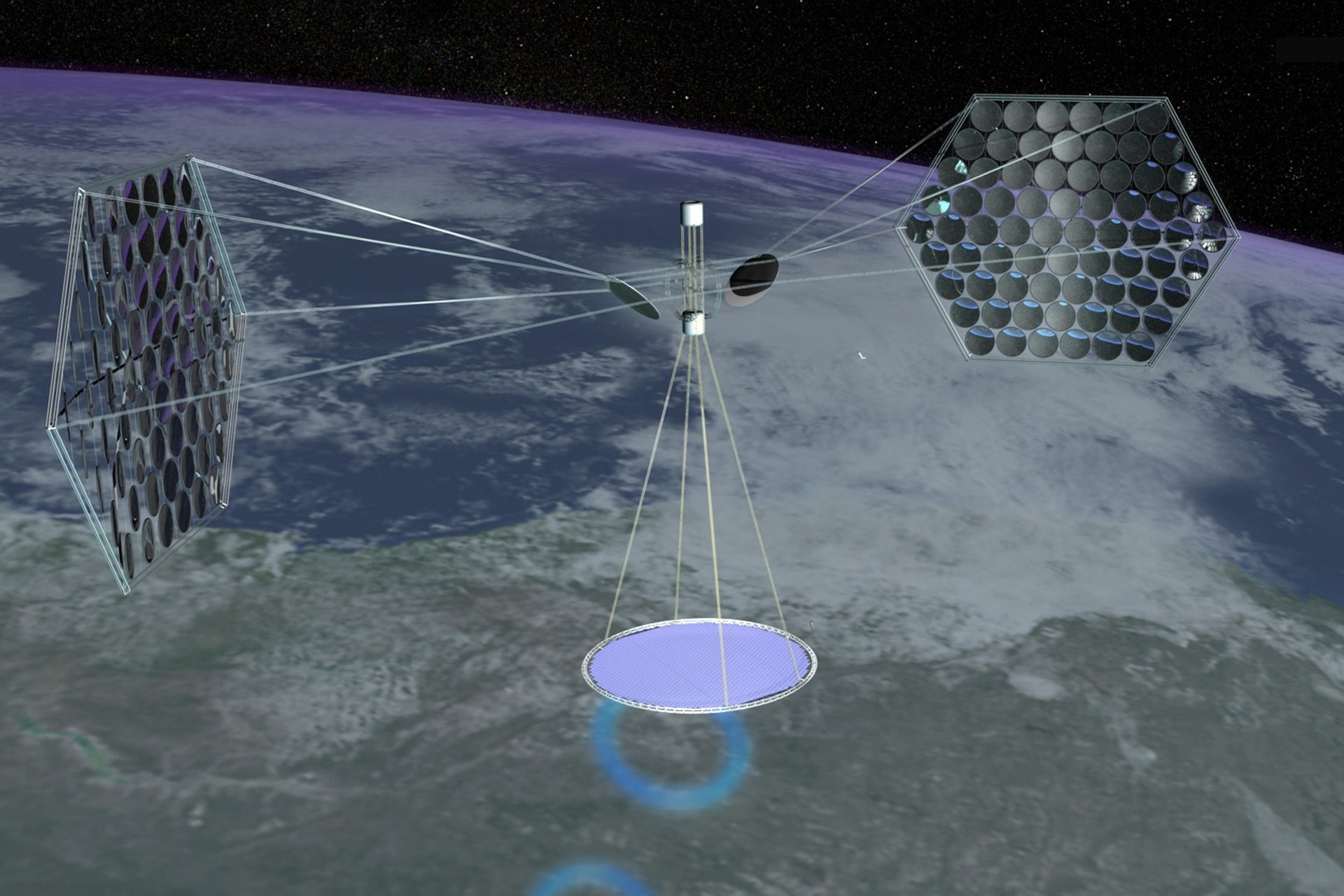
Japan aims to beam solar energy down from orbit
Oct 03

The Japanese space agency JAXA is developing a revolutionary concept to put "power stations" in orbit to capture sunlight and beam it to Earth.
The country has been looking for new power sources following the devastating earthquake and tsunami in March, 2011, that destroyed much of the north-east of the country and caused a meltdown at the Fukushima Daiichi Nuclear Power Plant.
Many of the country's nuclear reactors were closed due to stricter safety regulations after the emergency. Now JAXA is aiming to set up a Space Solar Power System (SSPS) by 2030. An array of mirrors would sit in geostationary orbit to collect solar energy and then transmits it to a power plant on the ground via microwaves or laser beams. There it could be used to generate electricity and hydrogen.
Proponents of the technology say that it would provide continuous energy without any worry that resources would be depleted. It would be unaffected by the time of day or weather and would provide environmentally friendly, clean energy.
Interestingly, the idea is not a new one. An American, Dr Peter Glaser, designed a similar concept in 1968 to deploy large solar panels in space to generate power and convert it into microwaves to transmit to the ground. Following studies by NASA and the US Department of Energy, the project was deemed too costly and it was never developed.
Similar studies have been carried out in Europe. The idea is also reminiscent of a Russian plan in the 1990s to use mirrors to beam sunlight to the ground at night. This had astronomers and environmentalists up in arms because of the light pollution it would have caused. The Japanese concept is different because there would be no stray light emitted from the beam.
http://newsonjapan.com/html/newsdesk/article/104720.php


ญี่ปุ่นใฝ่สูงอีกแล้ว!!! ญี่ปุ่นคิดจะยิงลำแสง พลังงานแสงอาทิตย์ จากวงโคจร!!!
Japan aims to beam solar energy down from orbit
Oct 03
The Japanese space agency JAXA is developing a revolutionary concept to put "power stations" in orbit to capture sunlight and beam it to Earth.
The country has been looking for new power sources following the devastating earthquake and tsunami in March, 2011, that destroyed much of the north-east of the country and caused a meltdown at the Fukushima Daiichi Nuclear Power Plant.
Many of the country's nuclear reactors were closed due to stricter safety regulations after the emergency. Now JAXA is aiming to set up a Space Solar Power System (SSPS) by 2030. An array of mirrors would sit in geostationary orbit to collect solar energy and then transmits it to a power plant on the ground via microwaves or laser beams. There it could be used to generate electricity and hydrogen.
Proponents of the technology say that it would provide continuous energy without any worry that resources would be depleted. It would be unaffected by the time of day or weather and would provide environmentally friendly, clean energy.
Interestingly, the idea is not a new one. An American, Dr Peter Glaser, designed a similar concept in 1968 to deploy large solar panels in space to generate power and convert it into microwaves to transmit to the ground. Following studies by NASA and the US Department of Energy, the project was deemed too costly and it was never developed.
Similar studies have been carried out in Europe. The idea is also reminiscent of a Russian plan in the 1990s to use mirrors to beam sunlight to the ground at night. This had astronomers and environmentalists up in arms because of the light pollution it would have caused. The Japanese concept is different because there would be no stray light emitted from the beam.
http://newsonjapan.com/html/newsdesk/article/104720.php